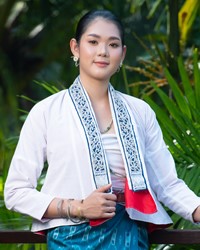Thai, Isan in Laos

Photo Source:
Copyrighted © 2026
Hansamurano - Shutterstock All rights reserved. Used with permission |
Send Joshua Project a map of this people group.
|
| People Name: | Thai, Isan |
| Country: | Laos |
| 10/40 Window: | Yes |
| Population: | 9,600 |
| World Population: | 19,067,500 |
| Primary Language: | Thai, Northeastern |
| Primary Religion: | Buddhism |
| Christian Adherents: | 0.00 % |
| Evangelicals: | 0.00 % |
| Scripture: | New Testament |
| Ministry Resources: | No |
| Jesus Film: | Yes |
| Audio Recordings: | Yes |
| People Cluster: | Thai |
| Affinity Bloc: | Southeast Asian Peoples |
| Progress Level: |
|
Introduction / History
Isan is a Sanskrit word. They are named after Phra Isuan, also known as Shiva, the Hindu god of Destruction.
The classification of the Isan Thai inside Laos is problematic, as their language is basically identical to Lao. Culturally and socially, they are the same.
Despite these similarities, several ethnographic sources list the Lao Isan people in Laos, including Laurent Chazee in his 1995 book. According to Chazee, the Lao Isan are dispersed in the Vientiane Municipality and neighboring parts of the Thaphabai District in Borikhamxai Province; while there are also Lao Isan in southern Laos, including the whole western part of Champasak Province, and near Savannakhet City. The Lao Isan invariably live near the Thai border.
According to Thai sources, there are about 21 million Isan in Thailand, occupying the whole northeast of the country. About one million Isan live in the city of Bangkok. There are a number of Isan migrant workers presently living in Singapore, Iceland and Norway. Others live in neighboring Laos.
What Are Their Lives Like?
Most of the Isan Thai in Laos are farmers dependent primarily on rain-fed agriculture. Major crops are paddy rice, cassava and sugar cane. They also raise cattle. Availability of fresh fruits, vegetables and fish varies with the seasons. Agricultural production remains low, due to the relatively dry climate and the saltiness of the soil. Although agriculture and industry is hindered by the shortage of water and internal infrastructure for transportation, the Northeastern Tai are still able to produce their world famous mud-mee silk.
The Northeastern Tai are well known for their friendliness and openness. They are family and community oriented, which makes them generally non-competitive and easy-going.
What Are Their Beliefs?
Buddhism was introduced to the region at least 1,000 years ago. One commentator has stated, "The rural [Isan] is likely to be staunch Buddhist but he is unlikely to have any real understanding of Buddhist doctrine or to be concerned with the long and difficult task of subduing desire and craving. He sees his religion in a much simpler, pragmatic light. He will wish to keep the Five Precepts- don't kill, steal, lie, drink alcohol, or commit adultery- (almost certainly unsuccessfully); and will believe that he should be tolerant, kindly and generous to others. These attitudes will acquire him a good balance of merit, leading he expects, to a better life."
What Are Their Needs?
The Isan Thai people need to accept the warm embrace of the only Savior so they can enjoy spiritually meaningful lives.
Prayer Points
The Isan are one of the largest blocks of unreached people in the world. Pray God would woo their hearts.
Ask God to send Isan believers from Thailand as evangelists into Laos.
Pray the Isan would be disillusioned with Buddhism and would seek to fill the voids in their hearts with Christ.